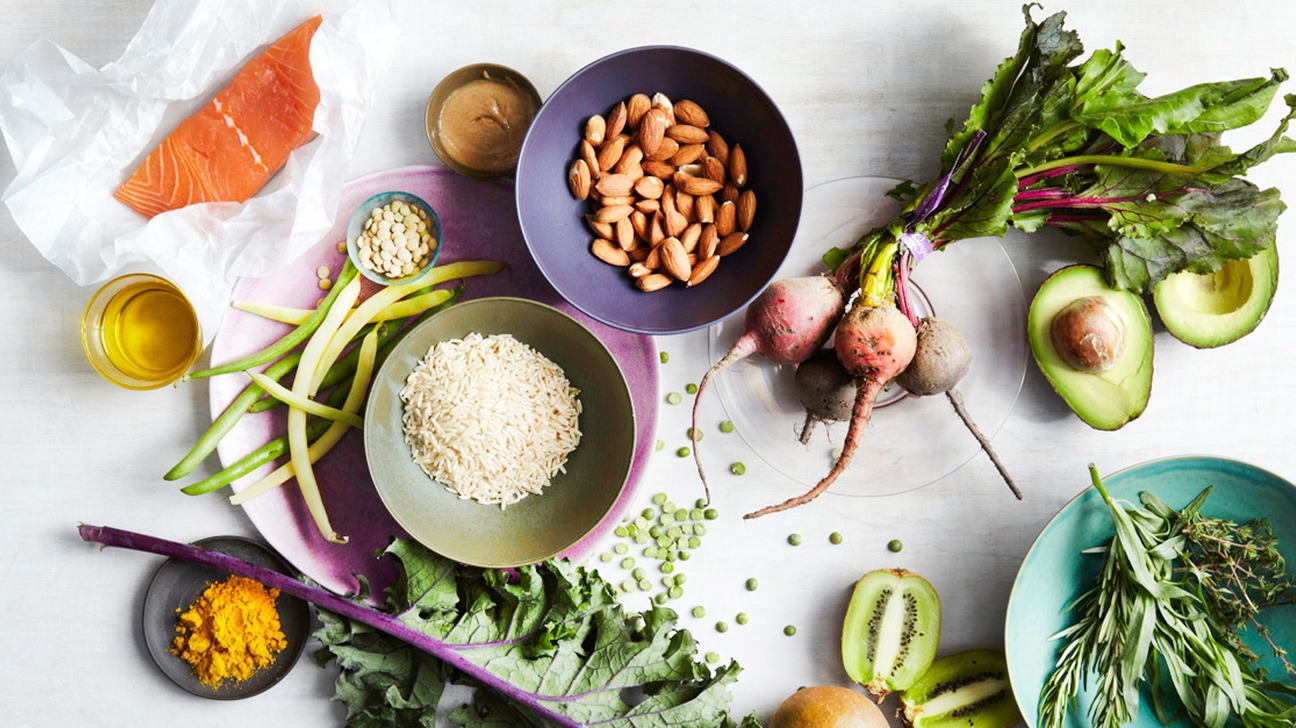
Ever wonder what nutritionists—those experts in health, wellness, and food—actually eat in a typical day? While there's no single formula for perfect nutrition, many registered dietitians and certified nutritionists follow certain principles that help them feel energized, satisfied, and balanced. Their choices are grounded in both science and practicality, aiming for nourishment rather than restriction.
Let’s take a closer look at what a day of eating might look like for a nutritionist—and more importantly, why they make those choices.
Morning: Hydration + Balanced Breakfast
First thing: Most nutritionists start their day with hydration. After 7–8 hours of sleep, the body is naturally dehydrated.
- Typical habit: A large glass of water with lemon, or warm water with a pinch of sea salt.
- Why: Hydration helps jumpstart digestion, flush out toxins, and wake up the metabolism.
Breakfast Example:
Oats with berries, flaxseeds, and almond butter
Why this works:
- Oats are rich in fiber and keep blood sugar stable.
- Berries provide antioxidants and vitamin C.
- Flaxseeds offer omega-3s and support hormone balance.
- Nut butter adds protein and healthy fats for satiety.
Alternatives nutritionists love:
- Greek yogurt with chia seeds and banana
- Smoothie with greens, protein powder, frozen fruit, and healthy fats (like avocado or nut butter)
- Whole grain toast with eggs and spinach
Common theme: They avoid sugar-laden cereals or skipping breakfast, as both can lead to energy crashes later.
Mid-Morning Snack (If Hungry)
Nutritionists don’t snack because of habit—they snack mindfully and only when hunger signals are present.
Snack Example:
Handful of almonds with a piece of fruit
Why this works:
- Provides a mix of protein, fiber, and healthy fats.
- Keeps blood sugar levels stable between meals.
Other go-to options:
- Hummus with veggie sticks
- Boiled egg with sea salt
- A small smoothie or protein shake
Rule of thumb: A snack should bridge the gap between meals—not replace one or cause a sugar spike.
Lunch: Protein + Fiber + Color
Lunch is typically a balanced, colorful meal that supports energy through the afternoon without leading to sluggishness.
Lunch Example:
Grilled salmon salad with quinoa, arugula, cucumber, cherry tomatoes, and olive oil vinaigrette
Why this works:
- Salmon provides anti-inflammatory omega-3s and lean protein.
- Quinoa is a complete protein and rich in fiber.
- Leafy greens and colorful veggies offer vitamins and antioxidants.
- Healthy fats (from olive oil) aid absorption of nutrients.
Alternatives nutritionists enjoy:
- Lentil or chickpea bowls with tahini dressing
- Turkey and avocado wraps with a side of fresh fruit
- Stir-fried tofu with brown rice and vegetables
Key principle: Prioritize whole, nutrient-dense ingredients and avoid ultra-processed convenience foods.
Afternoon Snack (Optional, But Often Useful)
Afternoons can bring a drop in focus or energy, so nutritionists often choose a smart, energizing snack to carry them through.
Snack Example:
Rice cakes with almond butter and sliced strawberries
Why this works:
- Carbs from rice cakes provide quick energy.
- Nut butter adds satiety with protein and fat.
- Strawberries add natural sweetness and vitamin C.
Other favorites:
- Trail mix with nuts and dried fruit
- Greek yogurt with a drizzle of honey
- Cottage cheese with pineapple
Snacking tip: If you’re constantly hungry between meals, nutritionists recommend checking the balance of your main meals.
Dinner: Light, Nourishing, and Satisfying
Dinner focuses on easy digestion and calming the body before sleep, while still being nutritionally complete.
Dinner Example:
Grilled chicken with roasted sweet potatoes and steamed broccoli
Why this works:
- Chicken gives lean protein.
- Sweet potatoes offer complex carbs and fiber.
- Broccoli is packed with antioxidants and supports detox pathways.
Dinner values:
- Lighter portions than lunch to support restful sleep
- A good mix of protein, carbs, and vegetables
- Simple cooking methods like steaming, roasting, or sautéing
Other meals nutritionists enjoy:
- Zucchini noodles with marinara and turkey meatballs
- Baked tofu with brown rice and kale
- Stir-fried veggies with shrimp or edamame
Evening Routine: Wind Down & Digest
While not technically a meal, the evening routine plays an important role in how well you sleep and how your body digests food.
After-dinner habits:
- Herbal teas like chamomile, peppermint, or ginger
- No late-night snacking (unless truly hungry—then it's something light like a few almonds or a warm glass of milk)
- Digital detox to wind down mentally
Why this matters: Good digestion and sleep hygiene are essential to metabolism, hormone balance, and mental clarity.
Key Nutrition Principles Most Nutritionists Follow
- Balance over restriction: Meals are built on protein, fiber, and healthy fats—not fads.
- Whole foods over processed: Minimally processed ingredients take priority.
- Hydration: At least 8 glasses of water daily, often with added lemon, cucumber, or herbs.
- Mindful eating: Tuning in to hunger and fullness cues, rather than following a strict eating schedule.
- Flexibility: Nutritionists allow for indulgences—a piece of dark chocolate or a glass of wine—without guilt.
Final Thoughts
What nutritionists eat in a day isn’t about perfection—it’s about consistency, balance, and nourishing the body without extremes. Their meals reflect both knowledge and self-awareness, aiming to support sustained energy, mood stability, and overall wellness.
By adopting just a few of these habits—like eating more whole foods, staying hydrated, and listening to your body—you can align your eating pattern with long-term health goals. Remember, nutrition is not a one-size-fits-all approach, but a lifestyle shaped by intention and care.